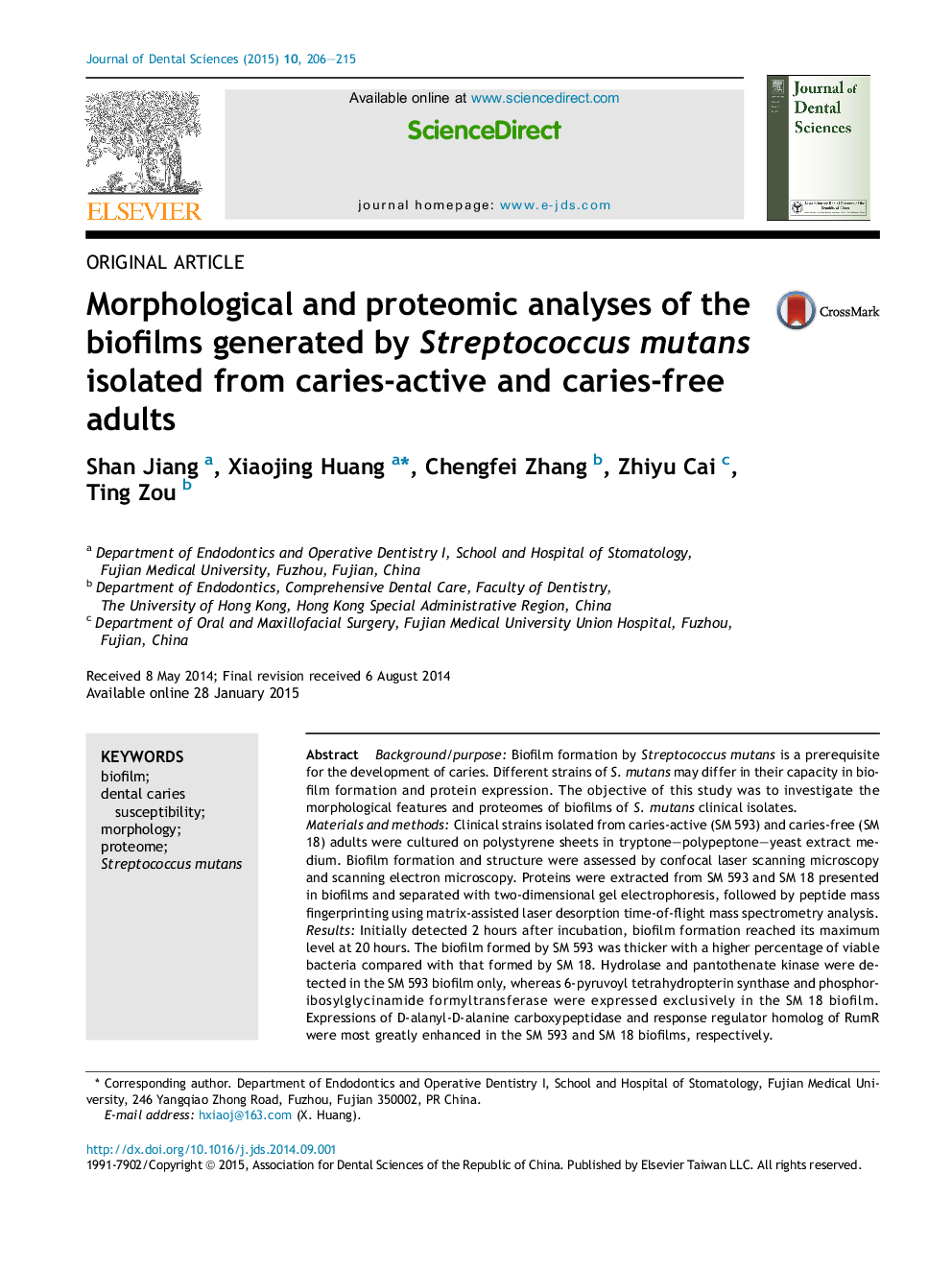| Article ID | Journal | Published Year | Pages | File Type |
|---|---|---|---|---|
| 3144585 | Journal of Dental Sciences | 2015 | 10 Pages |
Background/purposeBiofilm formation by Streptococcus mutans is a prerequisite for the development of caries. Different strains of S. mutans may differ in their capacity in biofilm formation and protein expression. The objective of this study was to investigate the morphological features and proteomes of biofilms of S. mutans clinical isolates.Materials and methodsClinical strains isolated from caries-active (SM 593) and caries-free (SM 18) adults were cultured on polystyrene sheets in tryptone–polypeptone–yeast extract medium. Biofilm formation and structure were assessed by confocal laser scanning microscopy and scanning electron microscopy. Proteins were extracted from SM 593 and SM 18 presented in biofilms and separated with two-dimensional gel electrophoresis, followed by peptide mass fingerprinting using matrix-assisted laser desorption time-of-flight mass spectrometry analysis.ResultsInitially detected 2 hours after incubation, biofilm formation reached its maximum level at 20 hours. The biofilm formed by SM 593 was thicker with a higher percentage of viable bacteria compared with that formed by SM 18. Hydrolase and pantothenate kinase were detected in the SM 593 biofilm only, whereas 6-pyruvoyl tetrahydropterin synthase and phosphoribosylglycinamide formyltransferase were expressed exclusively in the SM 18 biofilm. Expressions of D-alanyl-D-alanine carboxypeptidase and response regulator homolog of RumR were most greatly enhanced in the SM 593 and SM 18 biofilms, respectively.ConclusionSM 593 exhibited greater biofilm-forming capacity compared to SM 18. SM 593 and SM 18 biofilms expressed specific proteins involved in nucleic acid metabolism and intermediary metabolism, respectively, which may account for the differences in their biofilm-forming abilities.
